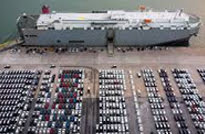The Environmental Impact of Importing Used Cars: A Sustainable Choice? - Vol.487

As global awareness of environmental issues grows, more consumers are considering the ecological impact of their vehicle choices. The automotive industry is a significant contributor to carbon emissions, and deciding between new and used cars often involves evaluating environmental costs and benefits. Importing used cars, particularly from countries like Japan, offers a compelling option in terms of sustainability. The environmental implications of this practice are worth exploring in greater detail.
Importing a used car can be a great option for consumers looking for quality vehicles at affordable prices, but the process may seem overwhelming if you're not familiar with the necessary steps. By following a few key guidelines, you can ensure a smooth and successful car import experience.
The first step is to thoroughly research and select your vehicle. It's essential to understand the regulations in your destination country, as each country has different rules regarding vehicle imports. These regulations may include restrictions on the vehicle's age, emissions standards, or safety requirements, so make sure your chosen vehicle complies with these standards. Additionally, selecting a reputable supplier is crucial. Companies like PicknBuy24 offer a wide range of Japanese used cars, providing transparent vehicle information, so you can feel confident about your purchase.
After selecting your vehicle, it’s important to ensure that it undergoes a thorough inspection. Reputable exporters like Picknbuy24.com will perform detailed inspection reports covering the car’s engine, bodywork, mileage, and overall condition. It's vital to confirm that the car has been well-maintained and to request any additional documentation, if necessary. Along with inspection reports, ensure that all necessary export documents are prepared and verified, including the vehicle title, export certificates, and a bill of lading. Missing or incorrect documentation can lead to delays or penalties during customs clearance.
Understanding your shipping options is also a critical part of the process. There are typically two main shipping methods: RoRo (Roll-on/Roll-off) and container shipping. RoRo is a popular, cost-effective method where the vehicle is driven onto and off the ship, making it faster and more affordable. However, the car will be exposed to the elements during transport. Container shipping, on the other hand, is more secure but comes at a higher cost. It involves placing the vehicle inside a shipping container, making it ideal for high-value cars or those that need extra protection during transit. Once the car arrives, customs clearance is required, so it's important to have all the necessary documentation, such as proof of purchase and emissions certification, to avoid any delays.
After your vehicle passes customs, it must be registered in your country. Depending on local laws, you may need to pay taxes, import duties, or other fees before the car is allowed on the road. In some cases, modifications may be required to ensure that the car complies with local regulations. This could include converting the speedometer, updating emissions systems, or adding safety features. When registering the vehicle, make sure all paperwork is complete and accurate, including proof of ownership, emissions test results, and import clearance documents.
As a final tip, it's essential to research any taxes, duties, or import fees that apply in your country, as these can add to the overall cost of importing the vehicle. Additionally, choosing a trusted shipping partner with experience in vehicle transport and customs procedures will help you avoid logistical issues. By following these steps, you can confidently navigate the car import process, ensuring a smooth journey from vehicle selection to registration.